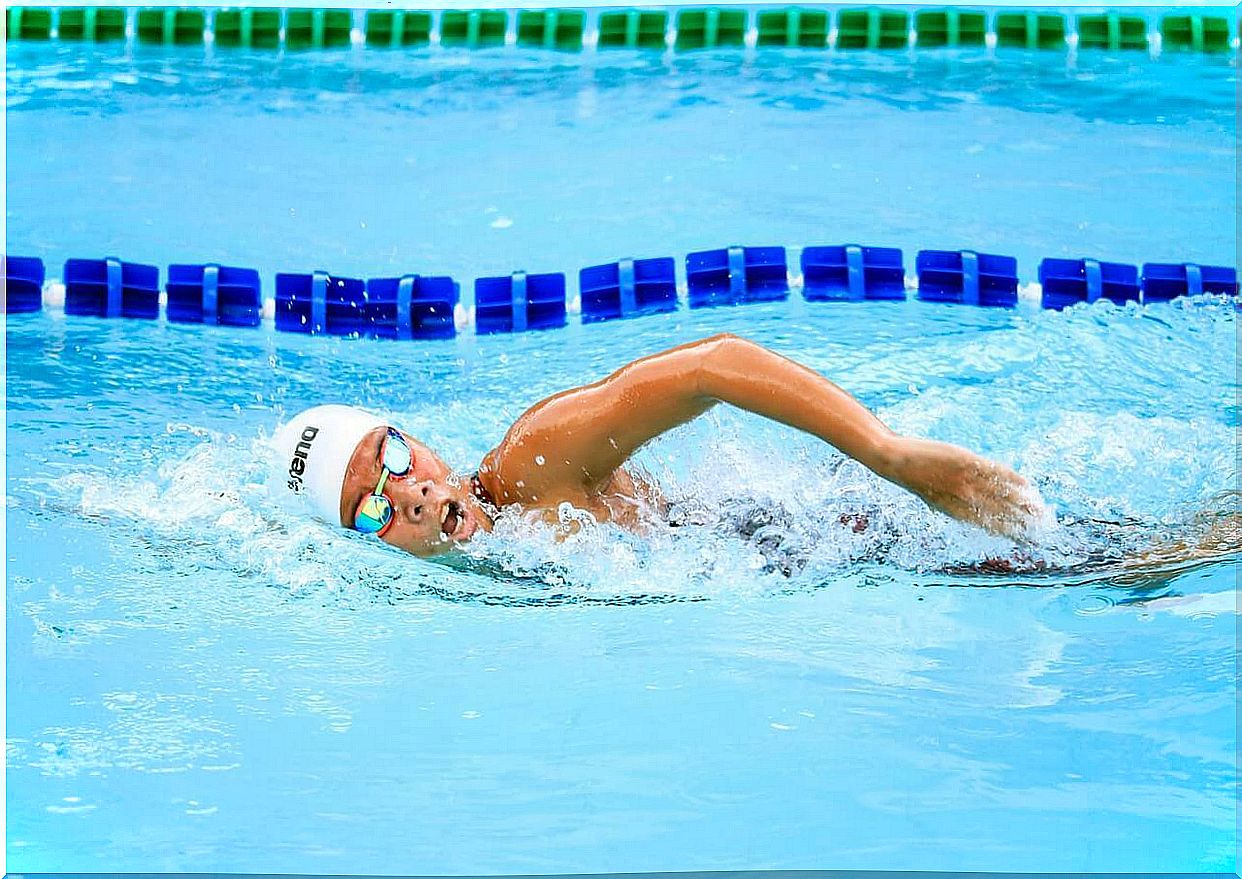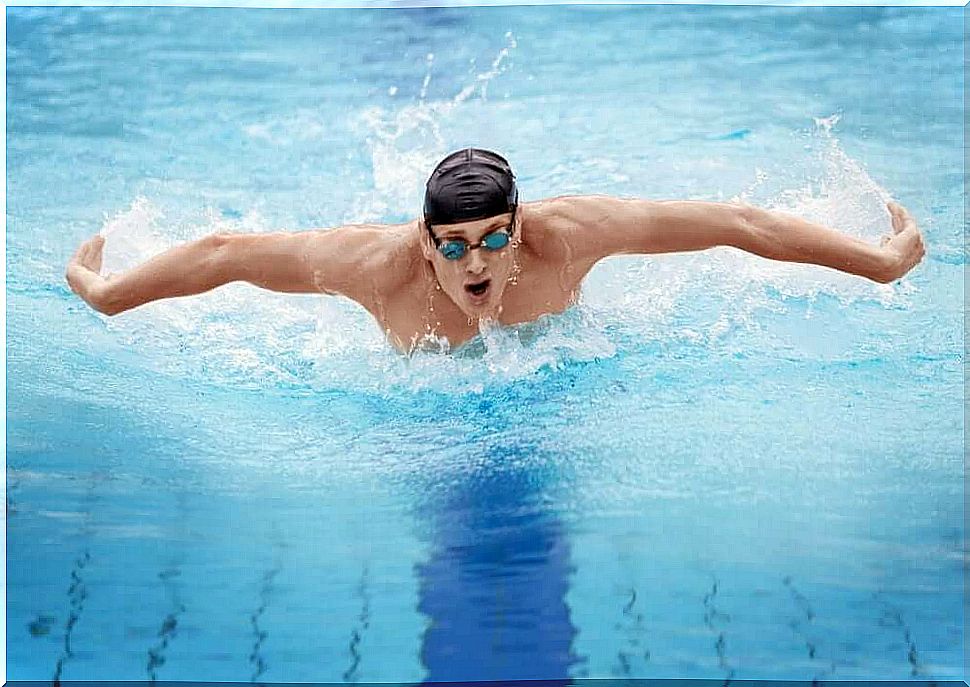How To Maintain Proper Breathing While Swimming

Maintaining proper breathing while swimming is one of the keys to improving performance and preventing that uncomfortable feeling of fatigue in the water. Although it’s a bit boring at first to maintain well-coordinated breathing, it can be mastered with practice.
Fortunately, the tips for having a good breath while swimming are not out of this world. Do you want to learn them?
Tips for maintaining proper breathing while swimming
When swimming, it is important to have well prepared lungs. The technique for correcting breathing while swimming may vary depending on the type of swimming.
In general, the goal of mastering it is to improve exercise performance, as gentle, relaxed breathing allows us to save valuable energy.
Slow bilateral breathing

The key to maintaining correct breathing in front crawl swimming is doing it bilaterally. This technique requires the swimmer to change the side they breathe on after each full stroke cycle.
The benefits of the bilateral breathing technique include:
- Reduces pressure on the shoulder area.
- Improves body balance and alignment.
- Contributes to greater energy savings.
- Improves localization ability and helps control vision from both sides.
Front breathing for butterfly style
In butterfly style it is easier to breathe. To do this correctly, the swimmer must breathe forward, keeping the head as high as possible. That is, pull in air when lifting your head and expel it when you put it in the water.

One variant currently being used is breathing every two stroke cycles. This is called “breath rate 2 and 1” and is used to achieve better performance.
Back style breathing
Many feel comfortable swimming backstroke, as breathing is much simpler than in other sports. However, it is not advisable to trust, as the swimmer may lose control of the position and swallow water.
So that there is no inconvenience, it is essential to pay attention to the rhythms and coordination, trying to inhale air before the arm crosses the vertical of the head. A common mistake is to continuously pull and release the air, without considering the movement of the body when swimming.
reverse breathing
In swimming, breathing is done in reverse; air is drawn in through the mouth and expelled through the nose. This advice is basic to having correct breathing when swimming, as it helps you to be more efficient.
Expulsion of air through the nose allows for more controlled breathing as it does not release all the oxygen at once. Therefore, it stays in the lungs longer and prevents the feeling of drowning.
Consequences of Bad Breathing When Swimming

Failure to perform adequate breathing while swimming has several negative consequences. Although in the learning process sometimes they are not noticed, over time it becomes an obstacle to achieve an optimal income. The most common are:
- Greater resistance to advancement because the hips and feet tend to sink deeper than they should.
- Feeling of fatigue because it increases the need to make unnecessary movements.
- Lack of general oxygen throughout the body, which increases early fatigue.
- Drowning sensation when holding your breath for a long time.
- Exhaustion and muscle tension from high effort.
Learning correct breathing while swimming is essential.









